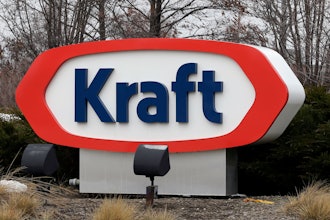A project team who tackles risk planning and management with collective intensity wins [at least] most of the time.
Facility construction project managers who bray to their peers about having perfected the art of flawless planning, performed error-free risk management, and have always met their projected schedule completion dates can stop here and take a bow while the rest of us genuflect with raised eyebrow.
While most construction projects have a “risk plan,” many are woefully inadequate and bound for problems. Then when a bad turn does strike the project, the domino effect may become unstoppable, affecting the project’s outcome and profitability of the venture, not to mention the potential for complete project failure.
Good news! Experience shows that intentional steps in devising, implementing, and managing a risk plan throughout the planning and construction process can make all the difference when things go badly. Here’s how.
Savvy Risk Identification
Creating a risk plan requires risk identification. Seems intuitive enough, and there are plenty of risk sheet templates circulating the office and basis sheets from previous projects. However, it’s not the listing itself that’s important, it’s applying the discipline of investigation from every possible angle, where no issue should be placed on a “to do later” list that inevitably gets forgotten.
The project manager should broadly survey knowledgeable and heterogeneous voices on his team to identify all reasonable risks and avoid blind spots. Those voices should represent, at a minimum, design/engineering, management, operations, human resources, and procurement/supply chain. Each construction trade should also be represented, not just management-level voices. Also include the marketing department to understand the market that’s driving the project, as well as for deal negotiations.
Communication during the risk identification process must be dominated with face time between risk management team members to synergistically generate additional ideas, from which the project manager compiles and categorizes the risks, assumptions, and dependencies. Save email and voice mail for follow-ups and document sharing.
Once potential risks are determined, develop action plans and assign action ownership with pre-authorized go/no-go criteria. Some plans may even need to be pre-bid to enable quick action. All this helps reduce unforeseen potentially costly delays.
Besides addressing traditional vulnerabilities, such as end-phase dates with ribbon cutting ceremonies, look for risks that represent opportunities. For example, one risk assessment team recently recognized that the recession slowed the market now rife with underutilized construction resources, including raw materials, construction equipment, and labor. So the team accelerated the release of construction documents for bid, receiving better pricing from hungry contractors and suppliers. Proactively managing this risk saved stakeholders nearly 25 percent of the project’s total cost.
Once it is written, the risk plan shouldn’t sit on the shelf at a construction site “in case of emergency”; there it only dies a dusty death. An effective team treats it as a living, evolving document with iterative versions from routinely re-assessing risks throughout the project’s timeline.
At weekly meetings, the project manager should be present and ask about concerns or significant updates to the project risk projections, immediately addressing them. At monthly meetings, the team should review each existing and new risk, and update threat levels and response plans where needed. This attention to the risk plan frequently identifies issues overlooked during a “regular” project update.
Pre-Construction Risks
Pre-construction risk identification greatly reduces the likelihood of stumbling upon unforeseen problems that force stakeholders to make pressured business decisions to catch-up with the schedule.
For example, for a recent brownfield project, the intention was to reuse the existing buried utility infrastructure (potable water, natural gas, fire sprinkler distribution, etc.) for the replacement structure. The team noted the possibility of undiscovered hazards and recommended a pre-construction infrastructure inspection to find issues not readily visible, instead of waiting until the time of specific need.
Even though inspecting the existing systems cost extra, the owners approved it, alleviating undeterminable, open-ended, unmanaged, and costly delay risks. By planning for failure point discovery before construction, the team was able to better schedule and manage the necessary upcoming repairs.
Of course, it is impossible to predetermine whether this advance expenditure is an investment that pays off later, as potentially thousands of risks can lurk in a project. These types of decisions require professional judgment which comes with accepted risk such as impact to critical dates, system dependencies, and impact to cost. While some risks are a gamble, an experienced risk manager can do analysis ahead of time to determine its risk level.
Ongoing Risks
Even projects with well-crafted risk plans routinely surface issues that require evaluation and careful monitoring. Effective risk management actually forces all the stakeholders to face their own comfort level regarding risk. They must self-identify where they are willing to bend, whether they will risk no more, and when to say enough is enough.
For example, on the brownfield project, the team was unable to reach initial consensus on the size of the electrical transformer to install. A too-small transformer would provide inadequate power, while a too-big transformer would negatively impact monthly utility bills. The final agreement was to wait to order the transformer (with a 16 to 20 week turnaround time) until they had comprehensive infrastructure criteria.
That, in turn, created a subsequent risk. The longer the order was delayed the more it threatened the schedule, project completion, additional construction costs, the commissioning date of the new facility and lost revenue. An order date had to be confirmed immediately.
The team set forth to identify the last possible date to place the order without delaying the project by weighing the per-day cost of exceeding schedule completion against the long-term savings ordering the precisely needed transformer. And a date was agreed upon by all. But even then, that risk was extensively reviewed weekly right up to the actual order date.
Because that risk was thoroughly assessed and carefully managed long before it became impactful, the team facilitated discipline with making their informed, deliberate, and timely decision-making in the stakeholders’ best interests. While the risk could not be avoided, proper planning alleviated any rushed, panicky decisions that often happen when difficult issues require crucial timely responses.
Realistic Project Schedules
Any discussion of risk management includes the topic of the project schedule. A well-designed and effectively implemented project schedule helps protect a project manager against the universal tendency toward plan derailment. That is, assuming the schedule is not considered a one-time timeline attempt.
First, make the project schedule realistic. Do not set a project up for failure with a timeline that will never work. That sounds obvious, but it happens all the time.
Second, consider the schedule to be ever evolving and regularly part of the project manager’s day, never far from mind. Managers must live by them, make every decision according to them, and continually talk about them with team members. Managers should be on top of and never surprised by schedule slips. This process is not complicated, yet requires vigilance and dedication.
Third, formally reviewing and revising the schedule at least every two to four weeks is a must, often more during the front and back end of a project. Modifying a schedule isn’t a sign of failure — it’s a realistic assessment of the current situation and a tool for contingency management.
Lastly, the schedule should be managed by those at the highest level of project control and understanding, those with the broadest overall vision of how the project tasks are interconnected and accomplished.
Without steadfast schedule management, the project can run out of control. The project manager must identify schedule risks at the start of project, as well as routinely revisit and revise the schedule as unforeseen problems crop up. As needed, principals must rework and compensate the schedule so their deadlines can remain intact. Project managers must address burgeoning problems and solve them before they mushroom, potentially destroying the project.
Keeping all of the members of a project team consistently focused and on target throughout a project – especially during a prototype roll-out or multi-project enterprise – is no small task. It’s not idealistic either. A finger firmly on the pulse of two key project management factors – risk and schedule, at every management and reporting increment, engenders consistent attentiveness and responsive project team posture, rather than a panicked reactive stance. This practice ultimately results in project and client success.
Dan Vining, PMP, is a general manager at SSOE Group (), an international engineering, procurement, and construction management firm. With 21 years of experience, Dan specializes in industrial and manufacturing projects. He can be reached in SSOE’s Toledo, OH, office at 419.255.3830 or [email protected].























